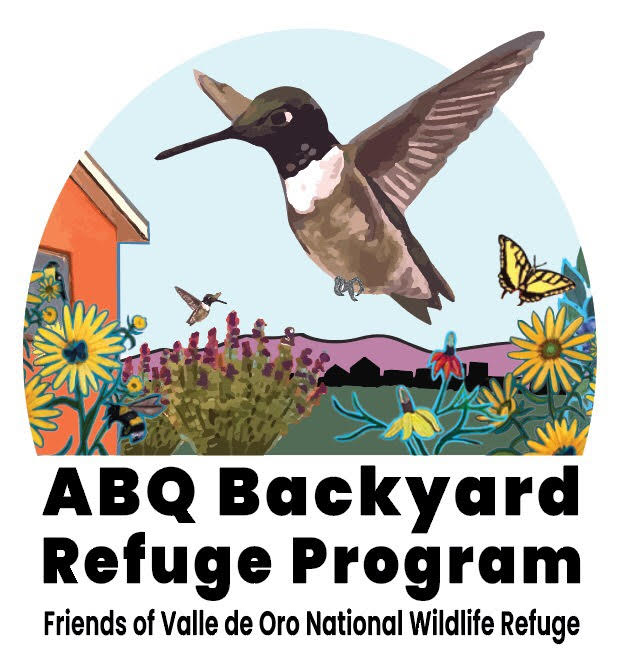Albuquerque Backyard Refuge Program

Dried Flowers Are Food For Finches!
Project Goldfinch is a community art project centered around the large patch of sunflowers in Parson’s Grove (between Sara Raynolds Hall and the Communication & Journalism building).
Students in the Sustainability Studies Program and Department of Geography & Environmental Studies community are creating a temporary art installation to draw attention to the area as habitat for Lesser Goldfinches and other birds. There is a resident Desert Cottontail in the patch, too!
A common landscaping practice is to cut down flowers when the petals fall; our goal is to preserve the dried sunflowers over the winter instead. When left over winter, the large patches of sunflowers support the more-than-human members of the campus community by providing both food and shelter.

If, as Barbara Kingsolver says, “it takes a superlative mind to appreciate a plant”, it takes a receptive mind to appreciate a dried plant that does not conform to our usual definition of beauty. We want people to learn to see drying sunflowers as free dried flower arrangements that provide bountiful food for our beautiful goldfinch neighbors!
ABQ Backyard Refuge Program partner Corva Rose of Tree School New Mexico, led an activity with Sustainability Studies students and experimented with weaving the sunflower stems around the perimeter of each patch and adding ribbons with messages to the goldfinches. The hope is that as autumn progresses and the yellow petals are replaced by yellow goldfinches eating the plentiful seed, the sunflower patches will look intentional and artful, communicating a “caring human intention or presence” (Jiayang Li, Joan Iverson Nassauer, 2020) and serving as a visual cue for the habitat to be left standing through the winter. To draw additional attention to the area and communicate the connection between the sunflowers and finches, community art educator Vashti Moss McCulley led sessions with students to create artwork with messages to border the patches.
Students are also contributing to community science by documenting wildlife sightings and making phenological observations with the iNaturalist and Nature’s Notebook apps. Over 200 species have been observed in the area since 2018. The phenological data recorded in Nature's Notebook will aid in tracking the responses of the plants and wildlife to our changing climate.
This is part of an effort is to enhance habitat for pollinators and other wildlife on campus. The Center for Community Geography and ABQ Backyard Refuge Program are collaborating with the UNM Office of Sustainability, Facility Services Grounds & Landscaping Department, and the Landscape Architecture program. We welcome participation from other departments!

